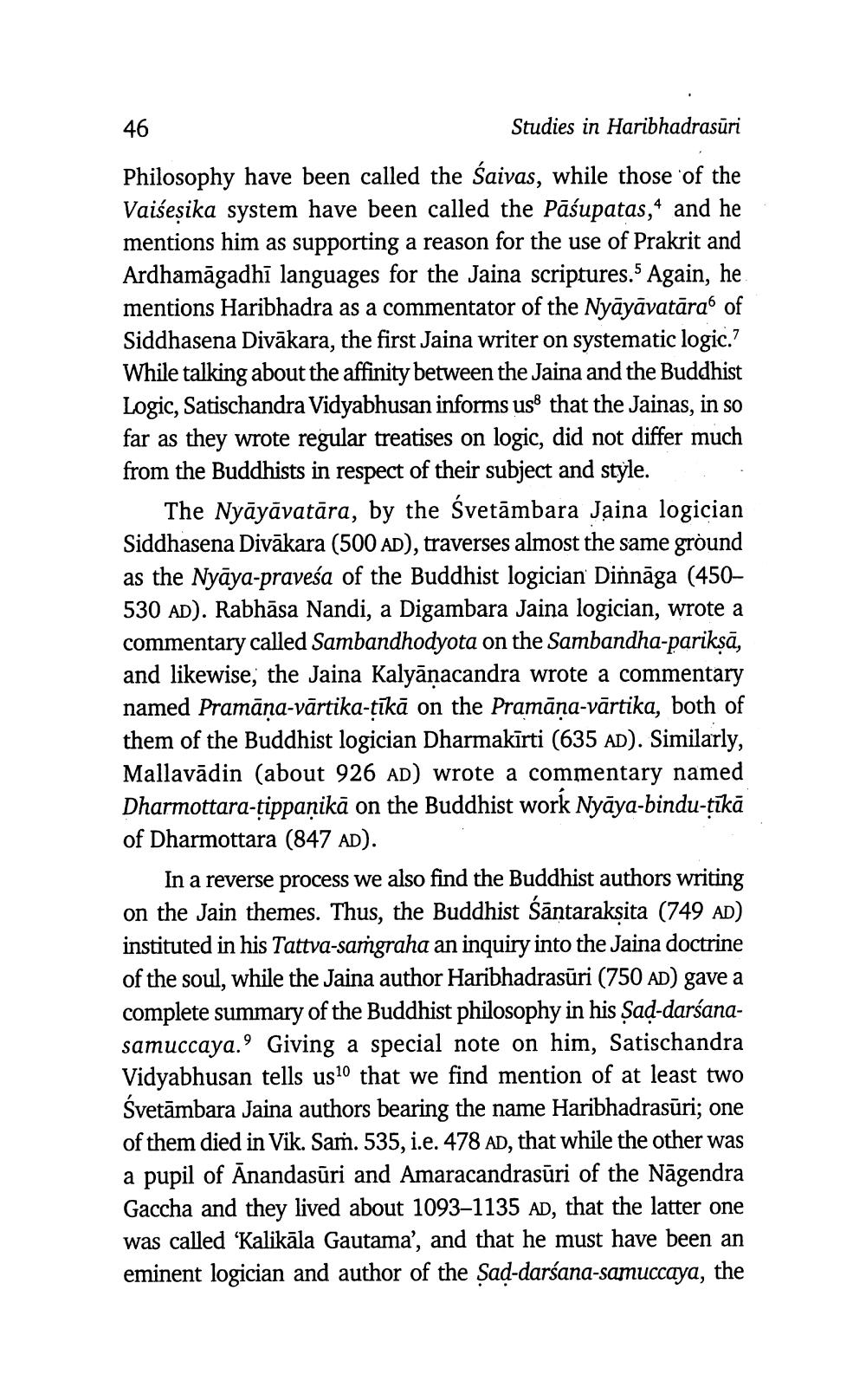________________
46
Studies in Haribhadrasūri
Philosophy have been called the śaivas, while those of the Vaiseșika system have been called the Pāśupatas, and he mentions him as supporting a reason for the use of Prakrit and Ardhamāgadhī languages for the Jaina scriptures. Again, he mentions Haribhadra as a commentator of the Nyāyāvatāra of Siddhasena Divākara, the first Jaina writer on systematic logic.? While talking about the affinity between the Jaina and the Buddhist Logic, Satischandra Vidyabhusan informs us that the Jainas, in so far as they wrote regular treatises on logic, did not differ much from the Buddhists in respect of their subject and style.
The Nyāyāvatāra, by the śvetāmbara Jaina logician Siddhasena Divākara (500 AD), traverses almost the same ground as the Nyāya-praveśa of the Buddhist logician Dinnāga (450– 530 AD). Rabhāsa Nandi, a Digambara Jaina logician, wrote a commentary called Sambandhodyota on the Sambandha-parikṣā, and likewise, the Jaina Kalyānacandra wrote a commentary named Pramāņa-vārtika-tīkā on the Pramāņa-vārtika, both of them of the Buddhist logician Dharmakīrti (635 AD). Similarly, Mallavādin (about 926 AD) wrote a commentary named Dharmottara-tippanikā on the Buddhist work Nyāya-bindu-tīkā of Dharmottara (847 AD).
In a reverse process we also find the Buddhist authors writing on the Jain themes. Thus, the Buddhist sāntarakṣita (749 AD) instituted in his Tattva-saṁgraha an inquiry into the Jaina doctrine of the soul, while the Jaina author Haribhadrasūri (750 AD) gave a complete summary of the Buddhist philosophy in his Şad-darśanasamuccaya.' Giving a special note on him, Satischandra Vidyabhusan tells us10 that we find mention of at least two Śvetāmbara Jaina authors bearing the name Haribhadrasūri; one of them died in Vik. Saṁ. 535, i.e. 478 AD, that while the other was a pupil of Anandasūri and Amaracandrasūri of the Nāgendra Gaccha and they lived about 1093–1135 AD, that the latter one was called “Kalikāla Gautama', and that he must have been an eminent logician and author of the Sad-darśana-samuccaya, the




